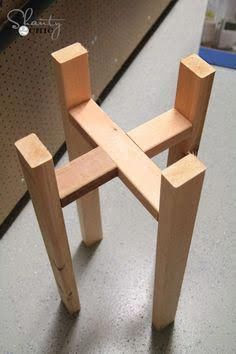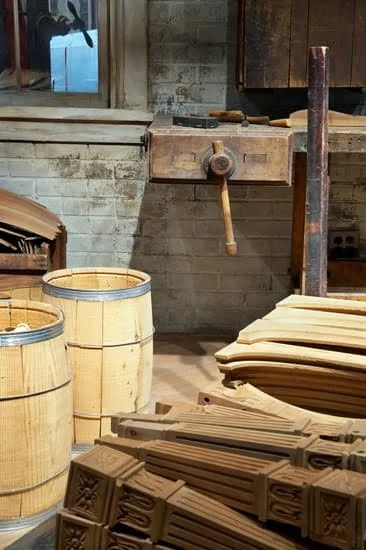Introduction to Woodworking Machinist Jobs
Woodworking Machinist Jobs involve the use of specialized tools and machines to build, repair, and maintain woodworking projects. These individuals are responsible for using a variety of power tools to shape materials into desired forms and products. They must often create custom pieces from raw materials utilizing precision machinery and measurements. Woodworking Machinists may work in both industrial settings, such as factories and warehouses, as well as small businesses producing smaller items like cabinets and furniture for domestic clients.
There are several different types of Woodworking Machinist Jobs depending on the type of product created or serviced. These include CNC machinists who program computer numerically-controlled (CNC) machinery to cut and shape materials according to user specifications; Furniture Makers who craft custom pieces out of wood or other materials; Cabinetmakers who assemble prefabricated components into assembled units or full built-in cabinetry; Upholsterers who cut, measure, assemble and manipulate fabric to cover furniture frames; Carpenters who create doors, windows, staircases, furniture and other items according to detailed blueprints; Joiners who attach individual pieces together with glue, nails or screws; Finishers who stain or paint the woodwork after completion; Hand Tool Specialists who use screws, saws and other hand tools to fashion pieces at their work station; Spray Laminators who cover preformed pieces with sprayed-on solutions that protect them from deterioriation.
The Benefits of Becoming a Woodworking Machinist
As a woodworking machinist, you have the opportunity to create beautiful and functional works of art. You get to use a variety of tools, machines, and materials to develop precise pieces that can be used in furniture, cabinetry, interior decoration, and more. A woodworking machinist must also possess advanced skills with both power tools and hand tools. Additionally, you’ll benefit from a steady source of work because there is always demand for your services.
When it comes to job satisfaction, becoming a woodworking machinist offers plenty of rewards. You can take pride in working with your hands and coming up with one-of-a-kind designs and installations that surprise and delight customers. With practice, you also increase your ability to craft pieces faster and more accurately every time. The pay scale for this role is typically good too – experienced woodworking machinists may even break into higher levels of earning potential depending on their location and specialty areas. Furthermore, when related fields such as carpentry or stained glass making require specialized services, the door is opened to new streams of income which can lead to flexible hours and more time off.
What Skills Does a Woodworking Machinist Need?
A woodworking machinist needs a wide range of skills, knowledge and expertise to be successful. In terms of skills, hand-tools and machine operations are key. The ability to read blueprints and sketches, interpret drawings and plans and work accurately to very precise tolerances is paramount. The machinist must also be familiar with safety regulations governing the use of power tools and machinery according to industry regulations.
Additionally, they need to know mathematics related to building the components they work with. This includes geometry (especially right angle and linear measurements), trigonometry (angle ratios), calculus (derivatives) as well as often complex problem solving skills in reference to commissioning projects that require precision ordering of materials or components which sometimes lack accurate familiarity with the product.
Finally, immense knowledge about details like saw blade types, wood joinery techniques ideally complement exceptional levels of their motor coordination skills needed for intricate tool operations typically involving high speed saw blades, drill presses or mill drills – all while wearing protective equipment!
Tools of the Trade for a Woodworking Machinist
Woodworking Machinists use a variety of tools and machines to efficiently process raw materials into finished goods. Some of the primary equipment used by machinists include: lathes, milling machines, drill presses, routers, saws, sanders, planers and other specialized tools. Lathes are used to shape wood and also to create a variety of pieces with repetitive symmetrical shapes such as furniture legs or tool handles. Milling machines are commonly used for cutting precision parts from a range of materials including wood and metal. Drill presses provide an efficient way for the machinist to drill straight holes with accuracy and speed. Routers are useful for creating contours in wood or shaping edges and corners. Saws come in many different types such as hand saws, jig saws, band saws, circular saws, miter saws, table saws and power scroll saws. Sanders can be used to sand away small imperfections on surfaces while planers are often used to level off thicker boards or adjust them down to more precise dimensions. No matter what machine is being used it is important that the machinist adheres to all safety guidelines when working with these powerful machines.
What Degree or Certification Does a Woodworking Machinist Need?
In order to become a woodworking machinist, some level of formal education or certification is typically required. Depending on the industry and job title held, educational backgrounds may range from an apprenticeship program or certificate in Wood CNC Machining or Woodworking Technology, to an associate or bachelor’s degree in Industrial Machining or Manufacturing Technology. Training and certifications may also include NIMS (National Institute for Metalworking Skills) certification in Machining as well as safety classes such as OSHA (Occupational Safety and Health Administration).Various trade schools across the country offer degrees and certificates tailored to woodworking machinists, covering topics including but not limited to machinery operations; machine setup and adjustments; mechanical drawing; planing
and milling; principles of geometry; CNC programming; welding theory; manufacturing processes and production management; advanced mathematics; engineering design software applications; computer-aided design/drafting (CAD/CAM); wood grain identification; wood shop layout and design; furniture restoration services ; cabinetmaking techniques ,spray finishing systems ,and quality assurance standards.
The Most In-Demand Types of Woodworking Machinists
Woodworking machinists are highly sought after in both large and small scale construction settings. The most in-demand types of woodworking machinists include milling machinists, sawyers, joiners, glue-ups, sanders, router operators, lathe operators, and CNC machinists. Milling machinists work to shape and size the materials used in constructions settings such as lumber and sheet stock. Sawyers cut straight lines or curves in lumber using machines such as circular saws. Joiners use machines to join materials together by gluing them or using nails or screws. Glue-ups utilize adhesive to bond wood pieces together while sanders give smooth surfaces to material. Router operators use computer-controlled machines to create personalized shapes on wood surfaces while lathe operators produce regular rounded shapes with their equipment. CNC orientated machinists are at the highest demand level as they use special software programs attached to specialized machines to craft unique projects from complex instructions. All of these types of machinists have a promising future due their critical role in the construction industry worldwide.
Qualifying for a Woodworking Machinist Job
In order to qualify for a woodworking machinist job, prospective candidates must possess an aptitude and interest in mathematics, measurements, and precision machines. Those applying for the position should have a strong mechanical aptitude, as well as the ability to recognize fine details in material. A basic knowledge of computer numerical control (CNC) machining is also typically required for machinist jobs, so previous experience with this type of machine is preferred. An understanding of aluminum and steel fabrication processes is additionally a plus. Aspiring machinists should also be willing to go through a three-year apprenticeship program that combines hand tool training with use of computers and other machinery.
The Financial Benefits of Becoming a Woodworking Machinist
The financial benefits of becoming a woodworking machinist vary depending on the individual’s job title, location, company, and experience level. Generally, machinists can expect solid wages and potential for steady career growth with promotions. Experienced workers typically earn more than entry-level employees. According to the United States Bureau of Labor Statistics (BLS), the median annual wage for woodworking machinists was $37,800 in May 2019. Additionally, the top 10 percent earned more than $64,000 during this same period.
Aside from wages, many employers offer comprehensive benefits packages that may include paid holidays and vacations, health insurance options including medical, dental, vision and life insurance plans. Retirement benefits such as pensions or deferred compensation plans may also be offered. Other perks like tuition reimbursement programs and educational development opportunities are common incentives for those in these kinds of occupations. In addition to salary and benefits packages offered by employers directly, union membership may provide additional opportunities to enhance income potential and job security in other areas as well.
Choosing a Career as a Woodworking Machinist
1. Know the requirements associated with the position. Working as a woodworking machinist requires a good understanding of various machines, tools and techniques related to woodworking. Therefore, it is important that you develop a suitable level of knowledge in these areas prior to applying for positions.
2. Consider ways to gain more experience in the field. Joining an apprenticeship program or attending workshops and classes provided by area employers may be beneficial for someone interested in working as a woodworking machinist. Such activities can help develop your skills and make you more attractive to potential employers.
3. Understand the qualifications necessary for higher levels of employment as a woodworking machinist, such as overseeing production or design work. Certification programs and advanced degrees offered by technical schools, colleges or universities may be beneficial in obtaining such positions.
4. Research potential employers and determine their needs when searching for qualified workers for their company’s woodworking projects. This will help ensure you are creating materials that meet the requirements set forth by clients or customers who hire your services at a later date.
5. Develop an adequate communication capability to understand customer requests and relay instructions regarding the construction process effectively to other members of the production team, such as carpenters and engineers involved in constructing furniture pieces or other wooden products from start to finish according to drawings created by designers or architects employed at the job site.
Conclusion
The takeaway from this blog post is that woodworking machinist jobs are available and can be a great career for those who are interested in working in the woodworking industry. Woodworking machinists use specialized machines to shape and form pieces of wood into products for commercial, industrial, and recreational use. Working as a woodworking machinist requires excellent skills in problem-solving, operations management, machine maintenance, and knowledge of safety guidelines. Those trained in the craft have potential to earn good wages and secure long term employment with companies that rely on their services. With the right qualifications and dedication to craftsmanship, anyone can develop their skillset further and make a successful career out of woodworking machinist jobs.

Hi everyone! I’m a woodworker and blogger, and this is my woodworking blog. In my blog, I share tips and tricks for woodworkers of all skill levels, as well as project ideas that you can try yourself.





